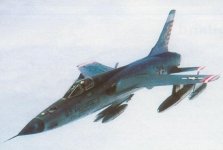- Reaction score
- 146
- Points
- 710
French chief of air staff on F-35 (Google Translate):
F-35 worries Air Force
04 August 2017 at 15h03
Chief of staff, General André Lanata, spoke of the American aircraft before the deputies of the Defense Committee.
Mark
Ottawa
F-35 worries Air Force
04 August 2017 at 15h03
Chief of staff, General André Lanata, spoke of the American aircraft before the deputies of the Defense Committee.
"The F-35 will quickly become a benchmark standard in the world's air force, not just in the United States, but also in our major partners. Whether one is outclassed by the United States is not surprising; That one begins to be by equivalent partners is another matter, " said General Lanata, Chief of Staff of the Air Force, at his recent hearing in the National Assembly . Among these "equivalent partners" , he cited the United Kingdom and Australia among others. "I see very significant pressure from the US aerospace industry in Europe, with the gradual deployment of a new generation F-35 combat aircraft. The latter is changing the operational capabilities due mainly to its discretion - it is not detected by current radars - and its connectivity capabilities: it massively connects information with other devices in the Air combat. If I speak of an air combat system, it is that we should not consider each airplane taken in isolation, but should conceive the system as a whole: it is this system which produces effects, thanks to the connection we reach To establish between the various mobiles of the air combat device , "he added.
Without addressing it directly - at least in the revised and corrected version in his hearing - General Lanata addressed the question of Germany, which is interested in the F-35 to replace the Tornados, although no decision is taken Expected next year. "It seems to me interesting to take an initiative with Germany to engage in a dialogue, to explore the possibilities for cooperation to replace our fleets of combat aircraft together. In the first approach we may have needs similar to those of Germany in this field. We are still two countries in Europe that have investment capacities, Germany demonstrates the will, with the significant increase in its defense budgets. Germany could be a partner on the condition, however, of finding the balanced industrial architectures which will allow the realization of these cooperations. We will have to put forward our strengths in this area. "
https://translate.google.com/translate?sl=fr&tl=en&js=y&prev=_t&hl=en&ie=UTF-8&u=http%3A%2F%2Fwww.lopinion.fr%2Fblog%2Fsecret-defense%2Ff-35-preoccupe-l-armee-l-air-131972&edit-text=
Mark
Ottawa









